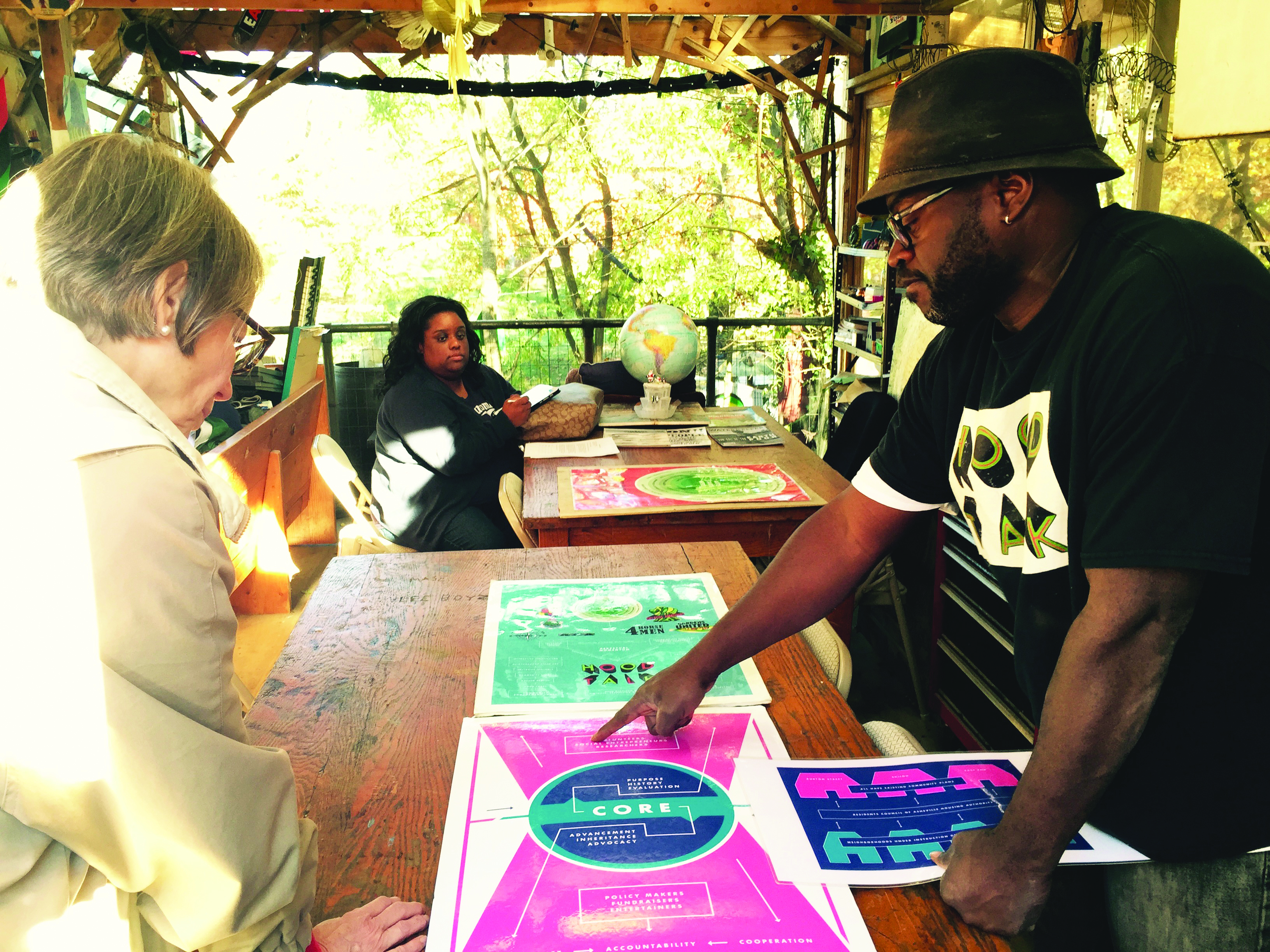NATIONAL ATR NETWORK SURVEY
Hundreds of ACEs, trauma, & resilience networks across the country responded to our survey. See what they shared about network characteristics, goals, and technical assistance needs.
Not long ago, Jan Shepard, Public Health Division Director of Buncombe County Health and Human Services, attended a presentation about the county’s still-in-the-works family justice center. Planners envision the center as a nexus of care and remedy—a place, for instance, where a survivor of domestic violence could speak with law enforcement officials, counselors and advocates in a single “safe place,” rather than having to navigate a fragmented system of providers.
Even though the presentation focused on the bricks-and-mortar aspect of the new center, a visiting speaker from San Diego talked about ACEs and trauma. For Shepard, that moment connected the dots: early adversity, family violence, supportive approaches and the ways various systems in the county—education, medical care, human services—are responding to new understandings of health and behavior.
Those changes are, at least in part, a result of the Buncombe ACE Collaborative, formed in 2012 to educate the medical and mental health communities about ACE assessment. The group grew from a learning collaborative—parents, educators, mental health and human service professionals who reviewed the literature on ACEs, created a handbook listing trauma and resilience resources and began piloting those materials with clients they were serving.
Buncombe County comprises rural and suburban neighborhoods, along with the city of Asheville. According to the state’s 2012 Behavioral Risk Factor Surveillance System (BRFSS) survey, 24.5% of respondents in the county reported ACE scores of 3-8, a higher rate than for the state as a whole.
The Collaborative’s first focus was on the increased risk of ACEs for children with disabilities. But the scope soon broadened: to increase awareness of ACEs among professional educators, health care providers and members of the work force who experience secondary trauma.
In 2014, with help from The Rensselaerville Institute, the Collaborative developed a Strategic Results Framework that outlined stakeholders, actions and goals: to see community members “with high resiliency and children with low ACEs scores positioned to lead healthy, happy lives…to provide awareness, education, tools and training to professionals and community members to reduce and prevent trauma-induced toxic stress.” Those goals became the Collaborative’s road map as the group grew from a dozen members to more than 80, a network that includes parents, hospitals, school systems, non-profits and government agencies.
The Collaborative created a website and a resource guide for medical providers and patients that explains how the human brain develops and how toxic stress can hamper its growth. Future guides will be aimed at parents and caregivers, education professionals and mental health/human services providers.
Prompted by the work of the ACE Collaborative, the Buncombe County School System won funding to adopt the Compassionate Schools Curriculum, designed to keep students engaged in learning by fostering a climate of health and resilience.
In 2015, two primary care medical practices began implementing ACE screening for adults and children. They plan to develop clinical practice guidelines, a referral network and a trauma-informed environment that other practices and clinics can replicate.
A speakers’ bureau—which includes a pediatric psychiatrist who is an active ACE Collaborative member as well as 15 additional trained speakers—is overwhelmed with requests for presentations on ACEs. And the Collaborative recently hosted its first Adverse Childhood Experiences Southeastern Summit, a three-day conference titled “Building Resilient, Interdisciplinary Workforces, Communities and Families.”
“I think Buncombe brings to the table a strength with relationships,” Shepard said. “Our school systems have embraced this to a bigger degree than I thought they would, and the medical community is starting to partner with us on a screening tool. There’s so much excitement and curiosity about the work.”
At the same time, she said, members of the Collaborative recognize that it’s time to bring various ACE-related projects and initiatives to the next level—a system-wide shift in culture, mindset and practice, a movement similar to the way civil rights or women’s liberation galvanized people across the country.
Shepard hopes being part of the MARC project will help Buncombe accelerate that momentum. “We want to learn to truly move the needle on something that’s important. We’re strong at doing work around our community, and we want to elevate that work now and have it really take off.”
Buncombe County Health and Human Services, the backbone for the ACE Collaborative, had already established a practice of partnership-driven, integrated services, Shepard said. Still, she and other members of the Collaborative were surprised by how eagerly people across various sectors embraced the new science of ACEs and resilience.
People seemed ready to understand that so many issues—substance abuse, mental health and behavioral challenges—are rooted in early-life experiences and that those problems are not just about the individual who suffers, “but about all of us,” Shepard said. “When we started the ACE Collaborative and began the work, it just took off like wildfire. We were astonished at the level of interest people had.”
This article is part of a community update series following the ATR networks participating in the MARC 1.0 Initiative. Read the other updates from Buncombe County, NC:
